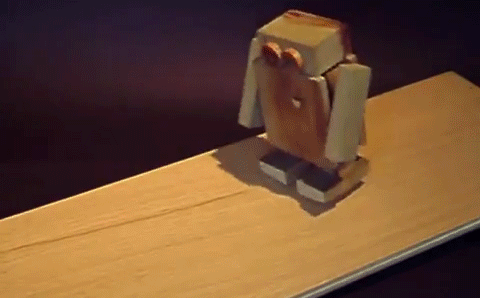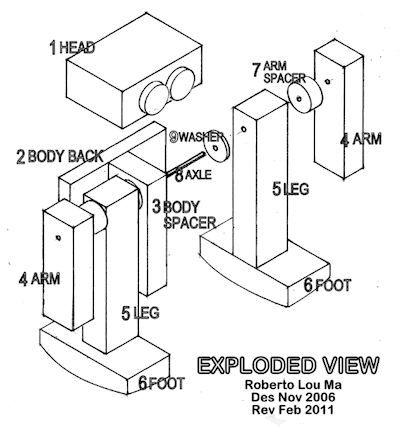
In the 1960s, the ramp walking toy was everywhere. While it was before my time, I’ve heard that they even gave them away in cereal boxes. You could place these toys on a slight incline, and they would wobble their way down, one step at a time. Powered only by gravity, these novelties seem fairly simple at first glance, but their motion and ability to balance have been the subject of academic studies in the past.
[youtube https://www.youtube.com/watch?v=UJLH5GYyVhY]For quite a while, the common view was that animals maintained the balance necessary for walking primarily through neurological control, but researchers have found that the physical structure of the legs are at least as important. When you examine the motion of bipedal walking, you’ll likely notice that legs behave sort of like pendulums, swinging back and forth. Ramp walking toys do a very simple version of the same thing, swinging one “foot” forward, shifting their weight, and then swinging the other foot forward.
[youtube https://www.youtube.com/watch?v=WOPED7I5Lac]In the 1980s, roboticist Tad McGeer noticed this pendulum-like action and began research on what is now called “passive dynamic walking.” What resulted from his research was a new way to look at bipedal robotics. Since then, passive dynamic walking approaches in robotics have become fairly common, and have been seen on ramps and even treadmills. The robots, these toys, and humans all walk with a remarkably similarly gait, in a very efficient and stable manner.
Science aside, the toys that inspired these robots are actually pretty old, originating sometime in the late 1800s. They’re a great exercise in simple woodworking, and are a suitable weekend project for kids and adults alike. If you’d like to make your own, download and print the plans for the rhino or robot toys (designed by Roberto Lou Ma) provided for free on the the Automata Blog. Who knows, it may be your first step into building amazing new bipedal robots!
ADVERTISEMENT






